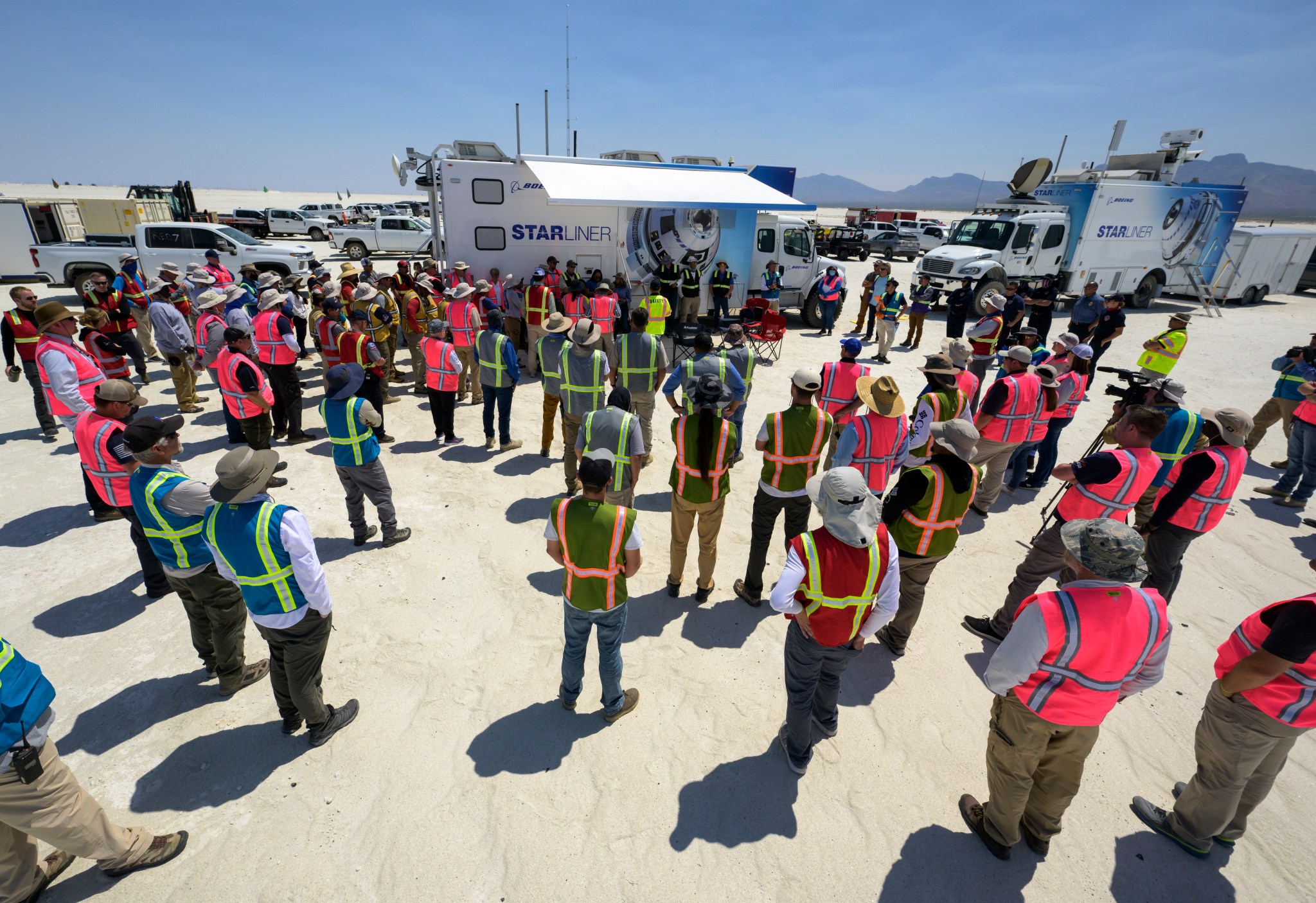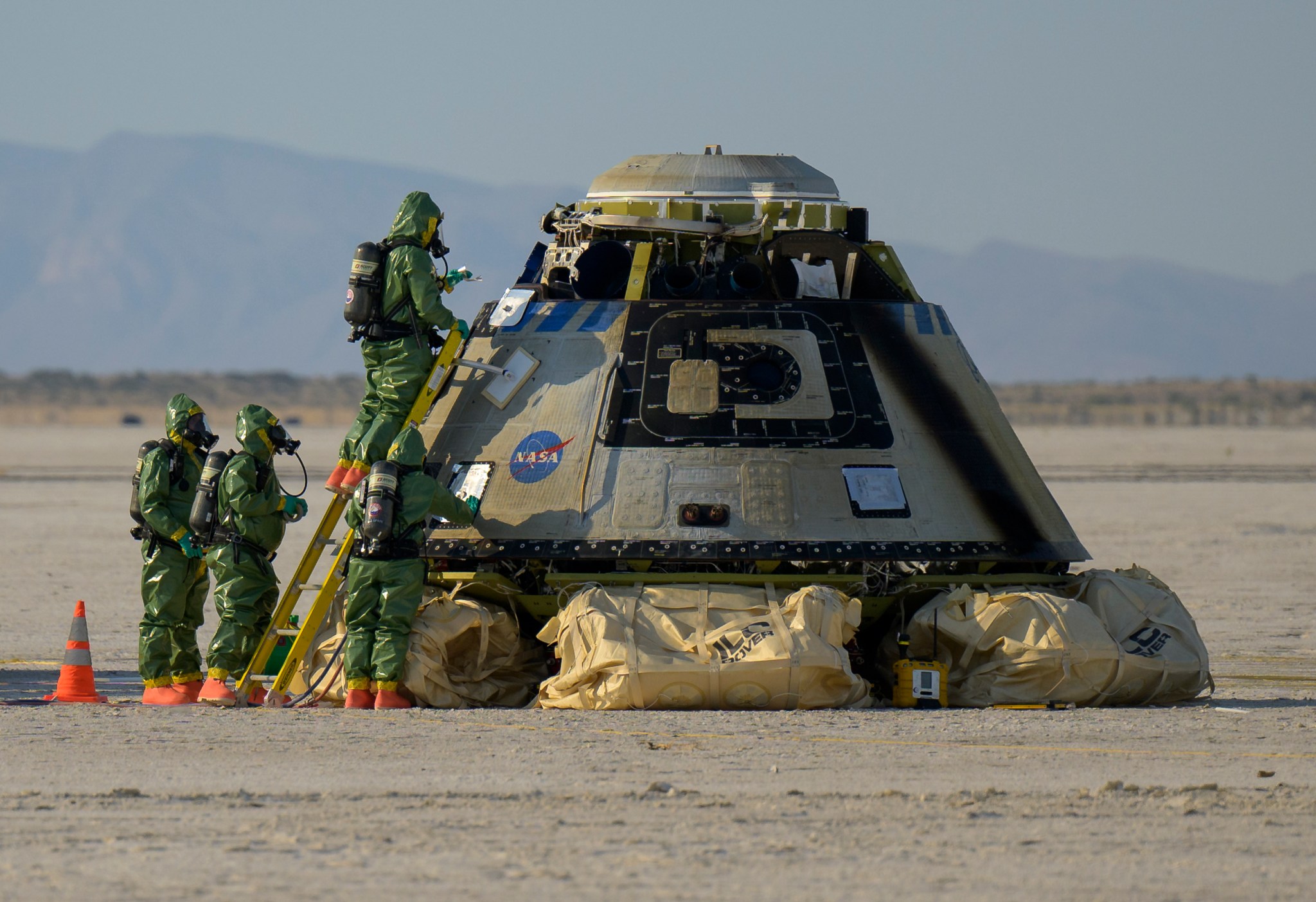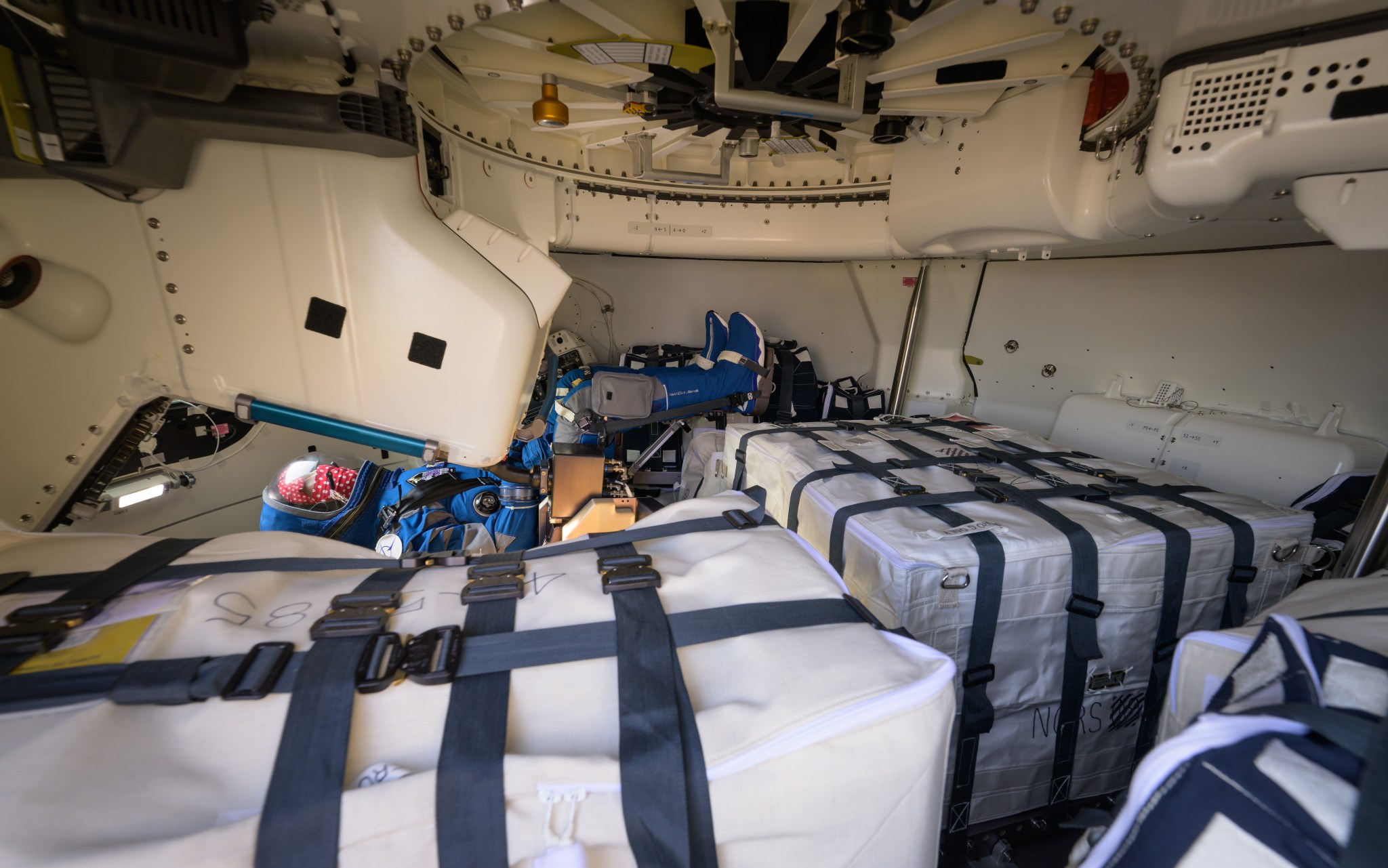
As NASA and Boeing prepare to return the company's Starliner spacecraft uncrewed from the International Space Station to Earth, safety and mission success remain as top priorities for the teams. Mission managers will complete a series of operational and weather checks before the spacecraft undocks from the orbital complex.
The Starliner spacecraft is the first American capsule designed to touch down on land, supporting expedited astronaut and cargo recovery on future missions and to aid the company in spacecraft refurbishment. For Starliner missions, NASA and Boeing will use potential landing locations in the White Sands Missile Range, New Mexico; Willcox, Arizona; and Dugway Proving Ground, Utah. Edwards Air Force Base in California also is available as a contingency landing site.
Twenty-four hours before undocking, NASA analyzes weather predictions for the various landing sites. Winds at the selected landing site must be 6 mph (approximately 6 knots) or less when flying with crew, and approximately 13 mph (12 knots) or less when uncrewed. Ground temperatures must be warmer than 15 degrees Fahrenheit, and the cloud ceiling must be at least 1,000 feet. One nautical mile of visibility is required, and the area must be clear of precipitation, thunderstorms, and lightning within approximately a 22-mile (35-kilometer) radius.
When teams proceed with undocking, Starliner will complete a series of departure burns, allowing it to reach its landing site in as little as six hours. A final weather check also occurs before the spacecraft's deorbit burn. Winds must be at or below 10 mph (9 knots). If winds exceed these limits, teams will waive the deorbit burn, and Starliner will target another landing attempt between 24 and 31 hours later.
Once clear to proceed, Starliner executes its deorbit burn, which lasts approximately 60 seconds, slowing it down enough to re-enter Earth's atmosphere and committing the spacecraft to its targeted site. Immediately after the deorbit burn, Starliner repositions for service module disposal, which will burn up during re-entry over the southern Pacific Ocean.
Following service module separation, the command module maneuvers into re-entry position. During re-entry, the capsule experiences plasma buildup - reaching temperatures up to 3,000 degrees Fahrenheit - that may interrupt communications with the spacecraft for approximately four minutes.

Once Starliner re-enters Earth's atmosphere, the forward heatshield - located on the top of the spacecraft - is jettisoned at 30,000 feet, exposing the two drogue and three main parachutes for deployment. The parachutes will continue to slow the spacecraft down as the base heatshield is jettisoned at 3,000 feet, allowing the six landing bags to inflate. At touchdown, the spacecraft is traveling at approximately 4 mph.

The NASA and Boeing landing and recovery team is stationed at a holding zone near Starliner's intended landing site. After landing, a series of five teams move in toward the spacecraft in a sequential order.
The first team to approach the spacecraft is the gold team, using equipment that "sniffs" the capsule for any hypergolic fuels that didn't fully burn off before re-entry. They also cover the spacecraft's thrusters. Once given the all-clear, the silver team moves in. This team electrically grounds and stabilizes Starliner before the green team approaches, supplying power and cooling to the crew module since the spacecraft is powered down.

The blue team follows, documenting the recovery for public dissemination and future process review. The red team, which includes Boeing fire rescue, emergency medical technicians, and human factors engineers, then proceed to Starliner, opening the hatch.

The landing and recovery team begins unloading time-critical cargo from Starliner. The spacecraft is then transferred to Boeing facilities at NASA's Kennedy Space Center in Florida for refurbishment ahead of its next flight.
NASA's Commercial Crew Program is working with the American aerospace industry through a public-private partnership to launch astronauts on American rockets and spacecraft from American soil. The program's goal is to provide safe, reliable, and cost-effective transportation on space station missions, which will allow for additional research time. The space station remains the springboard to NASA's next great leap in space exploration, including future missions to the Moon and, eventually, to Mars.






